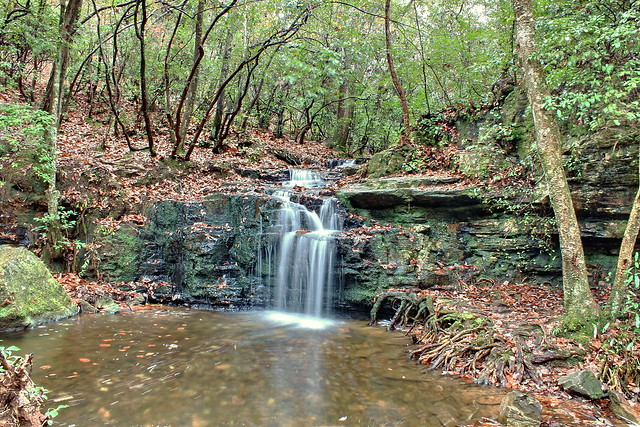https://www.flickr.com/photos/frenchy/4349330191/in/photolist-4saKPa-7Ckskz-4981Wa-932Nr-bjxWP-MigdA-647X2e-4apcXH-4fxWtr-932Tm-fmMnrm-bUytN-7fWxvQ-oWcwKQ-5brkj8-5UPajj-dPrfA-rq9fxQ-9Xty23-81XaF-8Maie-5a4MZ-K44QQ-a82Bpk-aWGFS6-6ej1dd-47Gjj4-nmnbx-hVbkPN-b83fSR-aZbzbP-2YVSA-6ehT41-6GUGS-kfEh95-aAbGSX-9vvg91-diRara-b2Pbw-bnK4tr-mecUY-932Hd-6HMSgF-rtRbe-5g5jy-2aSNMc-UgpRn-nCtCi-jJShH8-DB828/
Podcasts are nothing new and have existed since the first Apple iPod, but now they are gaining popularity in large numbers. According to USA TODAY, “Apple just surpassed 1 billion subscriptions for podcasts via its iTunes app, which is a major milestone for a category that had been considered an also-ran.” Podcasts are gaining popularity due to the ability for people, like comedian Marc Maron, to run them out of their garages or basements and they are a lot easier to download than they had been. “Last year, Apple said subscriptions of podcasts through iTunes reached 1 billion. RawVoice, which tracks 20,000 shows, said the number of unique monthly podcast listeners has tripled to 75 million from 25 million five years ago.” Podcasts had first been downloaded first from iTunes, if they could be found, and then transferred onto iPods. The ability to create a podcast in a garage does not seem like a feat, but considering where podcasts began it definitely is.
Podcasts: Humble Beginnings

The word podcast is credited to first appearing in The Guardian in 2004 in reference to audible.com and its downloadable radio programs. Two-thousand and four does not seem like that long ago, but in the digital age eleven years is a long time. In the digital age the formatting of the internet has changed, been upgraded, and download speeds have rapidly increased! It is thanks to these speeds that downloading podcasts is as easy as hitting a button. Podcasts first began as hobbies and less as money making occupations, which seems strange in an age when there are over 150,000 podcasts.
Podcasts and RSS
“Podcasts are digital media files, either audio or video, that are typically delivered via a Web feed (RSS feed); however, they can also be directly downloaded. ” We have seen RSS feeds and how they can be used in our Digital Humanities class, ![RSS-Logo-[Converted]](https://dh.sunygeneseoenglish.org/wp-content/uploads/sites/8/2015/03/RSS-Logo-Converted-300x300.png) but what are they again? “Rather than constantly visiting websites to check for new information, the user subscribes to various information sources, and the RSS feed delivers new content to the user automatically, allowing the user to streamline information and stay updated with minimal effort.” So, when a podcast is in hot demand and rather than crashing a website because too many people keep clicking the ‘refresh’ button or too many people are viewing the site itself, it would be more beneficial to download an RSS feed and then look for the newest podcast to appear there or it will automatically appear under the ‘podcasts’ app on a smartphone or tablet and also under the name of the podcast, too. If a person is lucky enough they do not need to download an RSS feed and the newest podcasts will be automatically downloaded to their smartphone or tablet! “Smartphones and Bluetooth-enabled cars have made it easier than ever for listeners — who are still mostly men — to load up their favorite programs.”
but what are they again? “Rather than constantly visiting websites to check for new information, the user subscribes to various information sources, and the RSS feed delivers new content to the user automatically, allowing the user to streamline information and stay updated with minimal effort.” So, when a podcast is in hot demand and rather than crashing a website because too many people keep clicking the ‘refresh’ button or too many people are viewing the site itself, it would be more beneficial to download an RSS feed and then look for the newest podcast to appear there or it will automatically appear under the ‘podcasts’ app on a smartphone or tablet and also under the name of the podcast, too. If a person is lucky enough they do not need to download an RSS feed and the newest podcasts will be automatically downloaded to their smartphone or tablet! “Smartphones and Bluetooth-enabled cars have made it easier than ever for listeners — who are still mostly men — to load up their favorite programs.”
Intelligent Podcasts or Just Farce?

Podcasts have come a long way from where they first started, but in a world of podcasts that “embody what is arguably the essential promise of the Internet: a means for surprising, revealing, and above all ennobling encounters with people, things, and ideas we didn’t know,” is there room for podcasts that are not intelligent and thought provoking? There has been a sudden surgof podcasts created by comedians, like Joe Rogan, Bryan Cook, and Cameron Esposito, and shock jocks, like Bibb and Yaz.

After listening to their podcasts nothing is learned or gained other than a good laugh. Podcasts are an escape for listeners like a good book or an audio book with more than one speaker, but they are painting a picture for their listeners. Both thought provoking and laugh provoking podcasts make their listeners think- thought provoking podcasts are more noted as being revealing and discussing new ideas, but laugh provoking podcasts discuss new ideas too just in a different formats.
Goodbye radio, hello Podcast
In this world of podcasts and their ever growing accessibility is it possible for radio to survive? Is it a dying media? “Adapt, adopt, improve,” quotes John Cleese of Monty Python, so that’s what radio did. Clear Channel Radio did indeed do so with their iHeatRadio app and now their radio programs can now be downloaded onto any smartphone or tablet. In fact iHeartRadio has become so successful that it has become a yearly festival in which the most talented and up and coming musical artists are featured. Unfortunately, there has been a fear among radio talk show hosts that their listeners will drift off to podcasts and will leave radio behind in the dust. However, if they follow in the footsteps of Clear Channel Radio then perhaps they will not have to worry about this after all.








